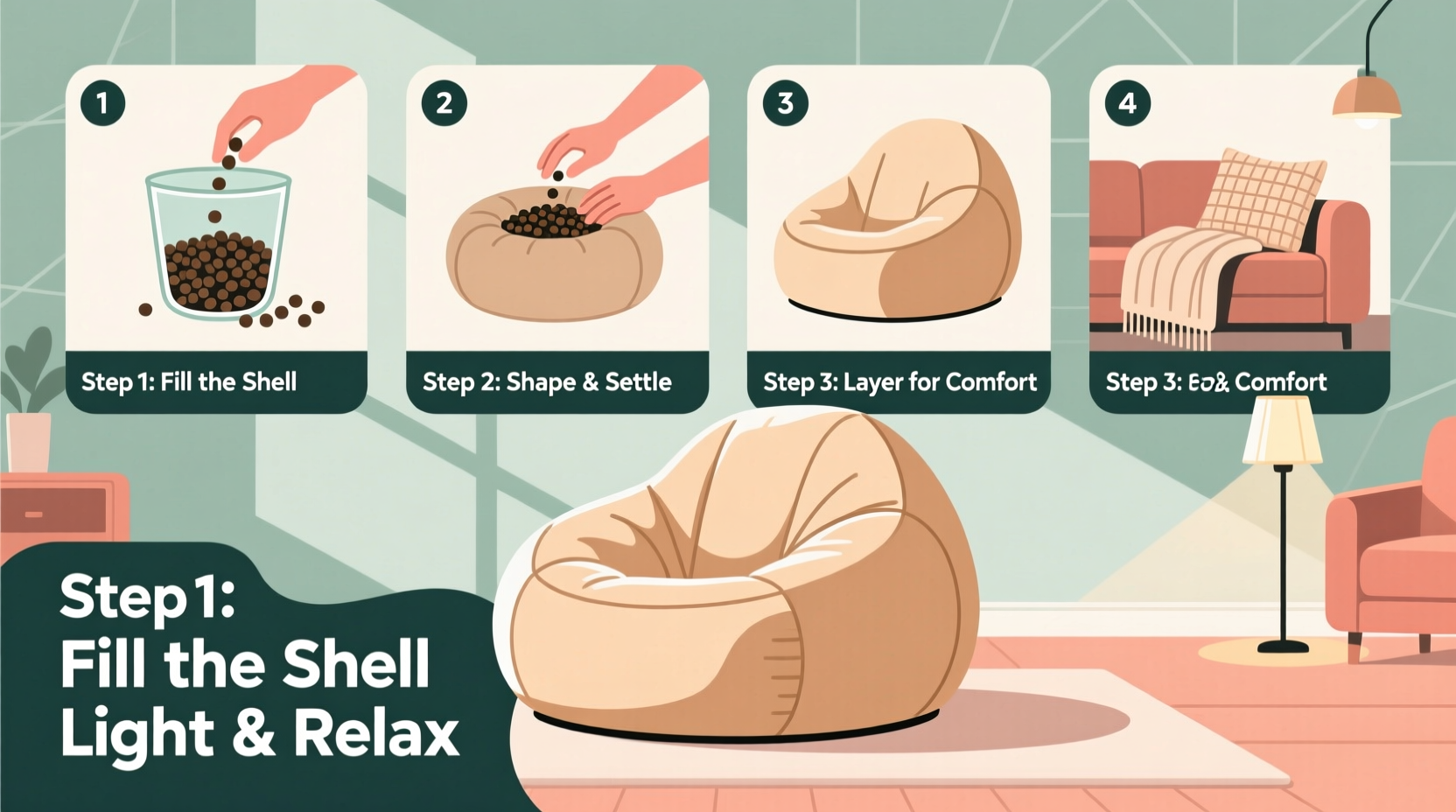Comfort is not a luxury—it’s a necessity. In homes, apartments, dorm rooms, or even home offices, the right seating can transform how you relax, work, or unwind. While traditional furniture often prioritizes form over function, the humble beanbag offers an adaptable, ergonomic alternative. But not all beanbags are created equal. A truly comfortable beanbag isn’t just purchased; it’s carefully crafted with intention. This guide walks you through every stage of designing a beanbag that fits your body, space, and lifestyle—delivering unmatched support and long-term satisfaction.
Understanding the Anatomy of a Superior Beanbag

A beanbag may look simple, but its performance hinges on three core components: shell material, inner lining, and filling. Each plays a distinct role in durability, comfort, and maintenance.
- Outer Shell: The first layer determines texture, resistance to wear, and visual appeal. Materials like cotton canvas offer breathability; nylon or microsuede provide durability and spill resistance.
- Inner Lining: Often overlooked, this secondary chamber prevents beads from escaping and reduces noise when shifting position. A tightly woven polypropylene liner is ideal.
- Filling: Expanded polystyrene (EPS) beads are standard, but size and density matter. Smaller beads mold closely to the body; larger ones offer firmer support. High-quality EPS retains shape longer than low-grade alternatives.
Step-by-Step Guide to Building Your Ideal Beanbag
Crafting your perfect seat isn't about guesswork—it's a deliberate process. Follow these seven steps to ensure optimal comfort and longevity.
- Assess Your Use Case: Will this be used daily for reading? As a guest seat? For kids’ playrooms? Purpose dictates size, firmness, and fabric resilience.
- Select the Right Size: Measure your available space and consider body proportions. A 3-foot diameter suits most adults; larger models (4+ feet) accommodate lounging or shared use.
- Pick a Shape: Round bags encourage curling up; wedge-shaped designs fit into corners and support posture when placed against walls. Rectangular styles mimic sofas.
- Choose Durable Fabric: For high-traffic areas, opt for water-resistant or stain-treated synthetics. Natural fibers like cotton are soft but require more upkeep.
- Double-Layer the Interior: Use two separate inner bags—one holding the beads, another acting as a buffer between the beads and outer cover. This reduces friction and extends life.
- Fill Gradually: Start with 70% capacity. Sit on it, adjust, then add more beads until you achieve the desired balance of softness and support.
- Test and Refine: Use the beanbag for at least 48 hours. If it flattens too quickly, add more filling. If it feels rigid, remove some beads.
Material Comparison: Do’s and Don’ts
| Material | Best For | Do’s | Don’ts |
|---|---|---|---|
| Cotton Canvas | Indoor lounging, breathable environments | Machine washable, eco-friendly options available | Avoid spills; prone to staining without treatment |
| Nylon | Kids' rooms, outdoor patios | Water-resistant, durable, lightweight | Can feel synthetic; may retain heat |
| Microsuede | Living rooms, adult lounging | Soft texture, resists pilling, easy wipe-down | Not fully waterproof; avoid abrasive cleaners |
| Leatherette | Modern decor, high-use areas | Wipe-clean surface, sleek appearance | Less breathable; can crack over time if dried out |
Real-Life Example: From Discomfort to Daily Retreat
Sarah, a freelance graphic designer working from her apartment, struggled with back pain after long hours on a rigid office chair. She bought a generic beanbag online, only to find it flattened within weeks and offered no lumbar support. Frustrated, she decided to build her own. Using a sturdy microsuede outer shell, dual inner linings, and medium-density EPS beads, she crafted a corner-fitting wedge beanbag. After filling it incrementally and testing over several days, she achieved a supportive yet soft seat that conformed to her spine. Six months later, it remains her favorite workspace—and her back pain has significantly decreased.
“Ergonomic design isn’t limited to expensive chairs. With the right materials and attention to structure, a beanbag can offer dynamic support comparable to high-end seating.” — Dr. Lena Torres, Posture and Wellness Specialist
Essential Checklist Before You Begin
Before cutting fabric or ordering beads, confirm you’ve covered these key points:
- ✅ Measured your intended space and chosen location
- ✅ Identified primary users (adults, children, pets)
- ✅ Selected a shape that complements room layout
- ✅ Chosen a cleanable, durable outer fabric
- ✅ Purchased double inner liners for bead containment
- ✅ Sourced high-quality EPS beads (minimum 3mm diameter)
- ✅ Planned for future maintenance (removable cover, zipper strength)
Frequently Asked Questions
How long should a well-made beanbag last?
A properly constructed beanbag using quality materials typically lasts 5–7 years with regular use. Factors like UV exposure, pet claws, and frequency of use affect lifespan. Refilling every 12–18 months helps maintain loft and comfort.
Can I make a washable beanbag?
Yes—use machine-washable fabric for the outer cover and ensure the inner liner is sealed tightly. Never submerge the bead-filled inner bag. Remove the outer cover for washing; spot-clean the interior as needed.
Are there eco-friendly filling alternatives?
While EPS beads are common, recycled foam chunks or biodegradable expanded PLA (polylactic acid) are emerging sustainable options. Note: These may compress faster than EPS and require more frequent replacement.
Final Thoughts: Comfort Is Personal—Design It Intentionally
A perfect beanbag isn’t found—it’s built. Off-the-shelf models rarely account for individual body shapes, room dynamics, or usage patterns. By taking control of the design process, you create more than a seat; you craft a personal haven of relaxation. Whether you’re sewing your own or customizing a modular kit, prioritize material integrity, structural layers, and incremental refinement. The result will be a seat that supports not just your body, but your daily rituals of rest and focus.









 浙公网安备
33010002000092号
浙公网安备
33010002000092号 浙B2-20120091-4
浙B2-20120091-4
Comments
No comments yet. Why don't you start the discussion?